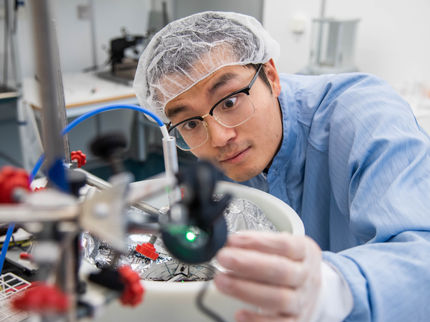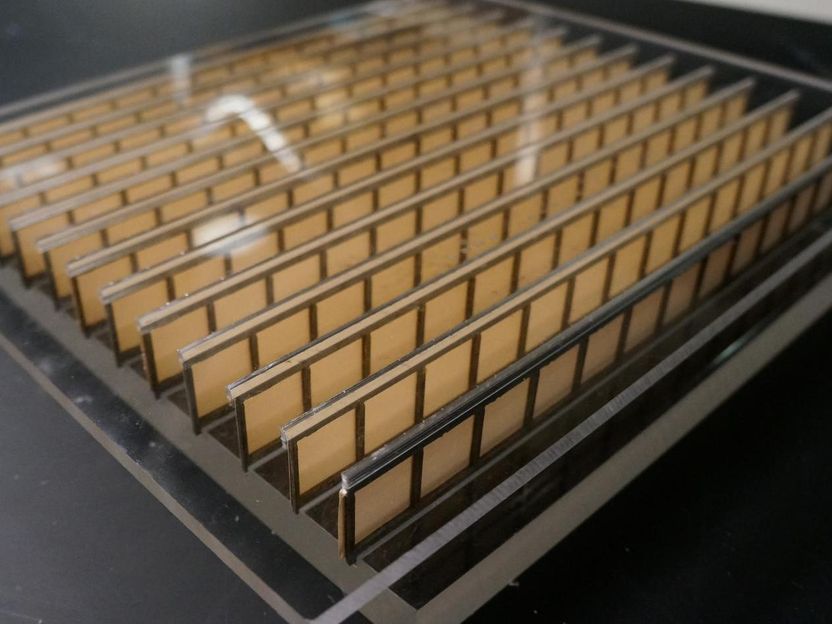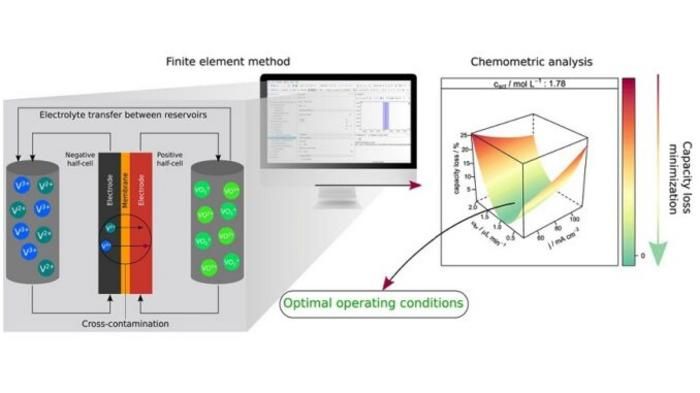Smart gifts will soon unwrap themselves
Cellulose-based actuators can be programmed and repair themselves
Advertisement
With the help of the high-brilliance X-ray source PETRA III, a German-Swedish research group has developed a new cellulose polymer material that can be specifically animated to move by moisture, making it an ideal base material for programmable actuators. In addition, the composite material is also very resistant to stretching and able to repair itself, as the group reports in the scientific journal “Advanced Functional Materials”. The mechanism of this self-healing in particular was investigated at PETRA III.

Symbolic image
Unsplash
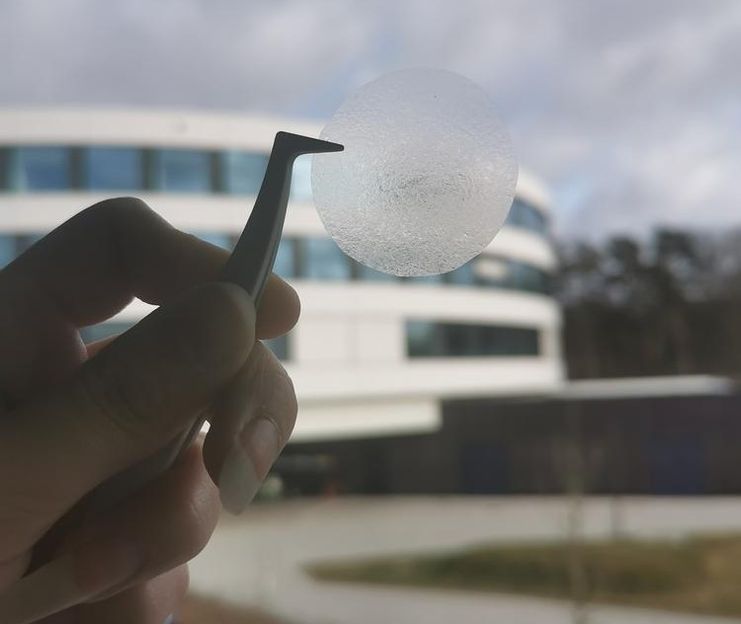
A film of the cellulose polymer actuator material produced for the investigations at PETRA III.
DESY, Qing Chen

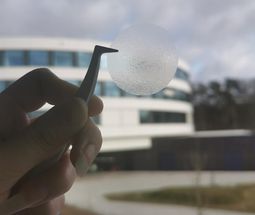
In nature, fascinating functions and mechanisms have prevailed over millions of years of evolution. In bionics research, scientists try to copy and reproduce these efficient methods from nature. For example, in sensors or bionic actuators, active elements that – controlled by a signal – can switch or move something. Modern actuators should be programmably stimulable, very robust and able to cope with a wide range of working conditions.
The research team with members from the Royal Institute of Technology Stockholm (KTH), DESY and the Helmholtz Centre for Heavy Ion Research has now produced a thin film of cellulose nanofibres with two types of polymers, following the example of biological tissue. To do this, they mixed polyvinyl alcohol (PVA) and polystyrene sulfonate (PSS) with the cellulose fibrils and poured the solution onto a glass plate. When it dried out, a circular film was formed in which a tight network of chemical and physical bonds formed. “It is the polystyrene sulphonate in particular that makes the film extremely stretchable and tough,” says DESY scientist Qing Chen, first author of the study. “This ingredient of the solution can be broadened by mixing food colouring agents, thus making it more colourful and diverse.”
Pieces up to several centimetres in size can be cut out of this film, which bend when exposed to moisture. “In principle, we can make an active wrapping paper out of the material,” says Stephan Roth (DESY and KTH), head of the PETRA III beamline P03 and co-author of the study, “you just have to spray some moisture on it, and it unwraps itself.”
But wrapping paper or sun awnings that roll up when it starts to rain are one thing; the novel cellulose polymer film has much greater potential, for example as a moisture sensor or switch. In some ways the devices are programmable: bending direction, bending speed and curvature of the films can be tailored by controlling the geometry of the samples before they are cut.
The nanofocus endstation at PETRA´s beamline P03 especially shed light on the tear-resistance and the self-repair of the material. The tensile stretching experiments were performed at KTH in Sweden. When the films were stretched beyond the yield strain, the deformation was preserved in static samples and examined by ultra-small angle X-ray scattering experiments at P03. The self-repair experiments were performed with the aid of a moisture controlling chamber at the same experimental station. By changing the humidty environment of the deformed samples with water vapor, the researchers could observe how the chemical bonds in the materials were getting repaired, thus reducing the injured area of the samples. “The self-repair mechanisms make this material truly unique,” Chen emphasises.
Original publication
Other news from the department science
Most read news
More news from our other portals
See the theme worlds for related content
Topic world Sensor technology
Sensor technology has revolutionized the chemical industry by providing accurate, timely and reliable data across a wide range of processes. From monitoring critical parameters in production lines to early detection of potential malfunctions or hazards, sensors are the silent sentinels that ensure quality, efficiency and safety.

Topic world Sensor technology
Sensor technology has revolutionized the chemical industry by providing accurate, timely and reliable data across a wide range of processes. From monitoring critical parameters in production lines to early detection of potential malfunctions or hazards, sensors are the silent sentinels that ensure quality, efficiency and safety.



